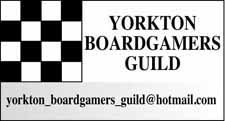Darkstar is not my usual type of game.
Maybe more correctly it's not my current gaming group's type of game. We seem to focus most of our precious gaming time on moving miniatures around a terrain-laden table, or shuffling for a quicker-style card game.
Darkstar is a full fledged board game, with lots of bits to play with, and cards to enhance game play.
Which is not so bad in this case, although it runs a bit counter to my general gaming preference.
The rule book delves in the 'Darkstar Epoch' just a little;
"Whether intentionally or otherwise, the Outsider star-drives disrupted the Imperial transport grid. The Empire fell apart once it was denied easy access to its far-flung arms.
"The Principals of the major Houses adapted to this situation by asserting executive authority over their cut-off galactic cantons. The ensuing wrangling has brought things to a parlous state: the deep-defence network has been de-activated, the majority of Empire squadrons have been destroyed, and the collapse of unsuccessful Houses has riddled the Empire with power vacuums.
"At the center of the Empire is Core Capitol. Although capture of Core may be strategically essential, no regime will last long without control of the deep-defence grid. Until that happens, their inhabited worlds are too readily held to ransom with interplanetary missiles.
Your goal is to end the DarkStar epoch by gaining control over the deep-defence grid."
It never hurts to get a bit of a field for an alien game world, but in the end this one boils down to being in a charge of a 'house' and looking to dominate the neighbourhood. It's a tried,and true theme oft repeated in boardgames.
So what is at the heart of game play with Darkstar, by designer Klaude Thomas?
"DarkStar is a game for two or four players that takes place over a series of rounds," details the rule book. "In each round players take turns to draw cards, build and launch missiles, move squadrons, and restore stargates; trying to collect deep-defence codes while fighting and defending against their opponents.
"To aid them in this task, each player rules an Imperial House with its own unique technology. Battles will be fought and won by careful positioning of squadrons and clever choice of Tactical Core cards. Capture of key systems will bring into play additional strategies via Imperial Edict cards."
That each house plays differently is a must in a game like this, but the basic game has limited houses, so games can get into the rut of repetition.
Of course in an era of game expansions the likelihood of new houses adding to the game are high.
"Players should aim for this outcome, which is achieved by collecting three colours of deep-defence codes," noted the rule book.
"When you have three defence code colours, take a Deep Defences tech card. If you hold a Deep Defences tech card in you Draw phase, you win.
"Typically you will need to hold onto Deep Defences for a whole round before winning, giving other players a chance to wrest your defence codes off you.
"If they fail to do so, you've won."
In the rule book is also a short 'epilogue' from the designer, which as a gamer I appreciate as it gives a bit of insight into Thomas' efforts.
" As I refined DarkStar I was forced to choose between commercial, use-motivated decisions, and 'designer' intuitions that felt deeper and more personal," he wrote. "In every case, I favoured that personal voice. Unfortunately, new players might therefore find that DarkStar feels random and unforgiving. Those are fair accusations.
"The best elements of the design are stargates and Recon squadrons. The former is because a simple method yields interesting topological distortions during play. Find Darkstar at www.printplaygames.com



